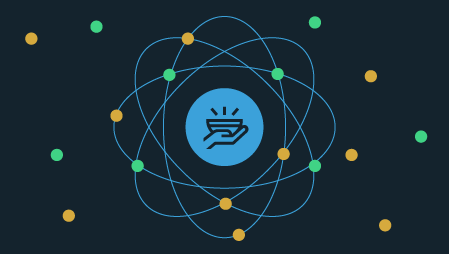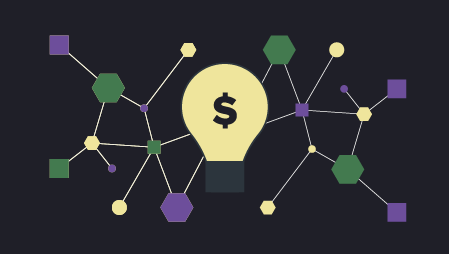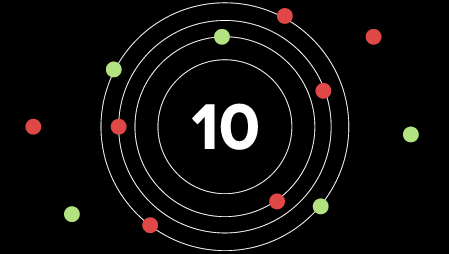Ready to learn Internet of Things? Browse courses like Internet of Things (IoT) Training developed by industry thought leaders and Experfy in Harvard Innovation Lab.
We know that with IoT, many existing roles will have to evolve.
New technologies and new processes are at the heart of any Internet of Things (IoT) deployment. They lead to new business models, new organizational structures, and—inevitably—new work roles. But rarely does this transformation happen as quickly and completely as it did at Campofrio Food Group, a multinational meat processor.
Three years ago, the company turned tragedy into an opportunity to transform its technology, culture, and business processes at their 17-year-old flagship factory in Burgos, Spain. After the factory burned to the ground, Campofrio rebuilt it as a connected factory, powered by the Internet of Things.
The changes in work roles were immediate.
“We transformed from an old-fashioned hierarchy where everyone had a siloed job to a more interactive culture where everyone is urged to step up and help shape the direction of the business,” Javier Alvarez, CIO, of Campofrio, told me. “In exchange for retaining jobs in a new state-of-the-art facility, we asked our employees to take advantage of training, and refresh and stretch their talents.”
Generation IoT sees opportunities instead of threats
>
While many people see IoT, artificial intelligence (AI), and automation as a threat to existing workers, companies like Campofrio demonstrate that by embracing changes in technology and culture, they can improve both business processes and employees’ work lives.
Campofrio encouraged employees to change their one-job-for-life mentality and reinvent themselves, helping them acquire new skills and collaborate on all levels, including participation in decision-making.
This kind of transformation is taking place across industries and up and down organizational structures. I recently visited a lettuce processing plant in Salinas, California, the capital of the “Lettuce Valley” just one hour south of “Silicon Valley.”
Yet again, as producers automate packaging lines, people working on these lines don’t simply lose their jobs. They have opportunities to train to upgrade their skills (and pay) in areas such as quality control and inventory management.
Think of the activities associated with IoT—cloud and fog computing, analytics, predictive maintenance, remote monitoring and control, remote asset management, and also augmented reality, 3D printing, drones, and more. Implementing these capabilities will require qualified workers with a wider range of skills—from collaboration and communication to data and process design.
Like at Campofrio, many of these “Generation IoT” workers will be existing employees, particularly those who embrace change and can learn new skills for IoT.
One of the first things you’ll notice about your IoT-enabled business is the increase in data flowing to and around the operation. You’ll need people who can make this data useful and turn it into business relevant outcomes.
The volume and speed of data generated by IoT will require skill sets far beyond those of a traditional database administrator. You’ll need people who know your business processes and your product environment, people who can create the rules and policies that will guide the analytics and other intelligent processes behind IoT.
IoT will also create a demand for specialized data scientists, programmers, applications developers and coders who can build and operate the horizontal and vertical analytics applications you’ll need to make the best use of your data. These roles may be in your own organization or in one of the many partners in your IoT ecosystem.
A new role for visionaries
>
One interesting and maybe a bit unexpected new role will be “IoT visionary.” This person will follow IoT innovations in the market and think about what might be possible in their organization. The IoT visionary need not be a scientist or an engineer. He or she won’t need to invent or build IoT.
What this visionary really needs to be is inquisitive, thoughtful, and something of a maverick, in order to look at the business and its processes in new, possibly unconventional ways. This person will also need strong collaboration, communication, and change-management skills—because when everything is digitized, anything can change. You’ll need someone who can help your organization envision, evangelize, and manage those changes.
A new twist on old roles
>
We know that with IoT, many existing roles will have to evolve. Perhaps the CIO will also become the chief IoT officer, and the role of plant control engineers will certainly change in the face of IoT-enabled automation. Supply chain management will take on a completely new meaning as IoT and blockchain start to automate and secure digital processes.
IoT will have a major impact on your IT staff, starting with the networking department. Existing IT networking experts will need to learn new skills to accommodate fog computing and other IoT-centric architectures. IT people are already skilled in network architecture and design, network availability, network performance, network analytics and much more. What’s new is partnership with the Operational Technology or Business Technology teams.
They’ll need to work together to design and implement all of these technologies across much more challenging production and operational environments, in addition to traditional enterprise IT environments and the cloud—as well as integrating legacy systems with new IoT capabilities.
Let me also highlight the need for security, privacy and compliance experts. Security issues are perhaps the single greatest barrier to IoT adoption. With evolving IoT security challenges, you’ll need to up your game in developing an ongoing, comprehensive, architectural approach to risk assessment and mitigation.
Chasing Gen IoT
>
With all these new IoT skill sets and roles, finding the right workers will be the challenge. As the IoT-based economy drives trillions of dollars in economic growth, there will be a worldwide scramble for people with these types of skills:
- Can handle IoT-based business processes
- Are data- and networking-aware
- Are comfortable with agile operations supported by data-driven decisions and business processes
- Are attuned to the API-, mobile-, and data-driven economy that was already emerging even before IoT began building the momentum we’re witnessing today
- Have essential “soft” skills or emotional intelligence. They can:
- Work across the organizational boundaries
- Build and effectively execute within diverse virtual team environments
- Influence agile thinkers to embrace new approaches rather than resist them
Competition for these workers is already fierce, and it will only grow more intense going forward. The industrial segments, including manufacturing, are seeking the same type of workers as Silicon Valley. In my next article, I’ll explore some of the things you can do to attract and retain the Gen-IoT workers you’ll need to compete and grow in the IoT economy.
Originally posted at iot for all



